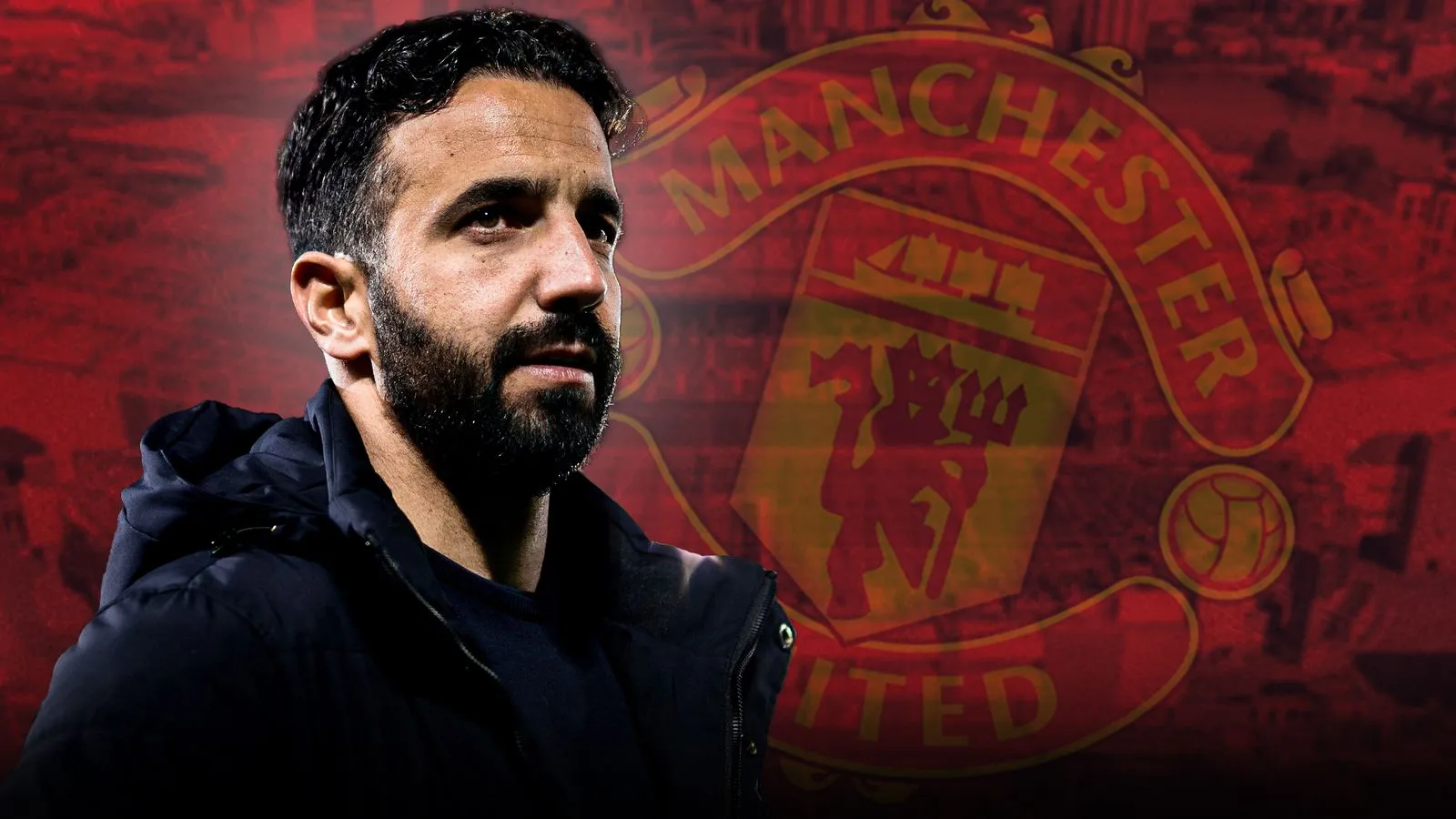Manchester United are closing in on the appointment of Ruben Amorim as their new head coach to replace Erik ten Hag.
Amorim, a rising star in coaching, has seen significant success at Sporting Lisbon, and his philosophy could bring a refreshing change to Old Trafford. But what does “Amorim-ball” really look like, and how might it change United’s style?
Ten Hag’s time at United faced criticism for lacking a consistent and clear style of play, a gap that the club is keen to fill with Amorim, who has a strong tactical identity. Over his four years at Sporting, Amorim has won two Portuguese league titles and two league cups, consistently implementing his style regardless of roster changes.
Amorim’s philosophy is based on possession play with short passes, a back-three defensive setup, and a high press. His teams maintain a high defensive line, aiming to dominate the ball and quickly regain possession when lost. As he takes over at Old Trafford, fans are curious about how these methods might play out in the Premier League.
Advertisement
Latest Press Conference
We’re on Social Media



Back Three
The back-three formation is Amorim’s trademark, having used it in all 188 league and European games at Sporting. His preferred setup is a 3-4-2-1 or 3-4-3, and occasionally a 3-5-2, and he’s unlikely to shift from this approach. United, under Ten Hag, almost exclusively used a 4-2-3-1 setup, making this a big tactical shift for the players.
The last game that Amorim managed at Sporting average positions: Sporting vs Nacional

A back three could be especially beneficial for Lisandro Martinez, who struggled at times as part of a two-man center-back pairing. In Amorim’s system, Martinez would take on a role similar to Goncalo Inacio at Sporting. Inacio’s responsibilities included advancing the ball and initiating plays, a skill Martinez has already shown under Ten Hag.
Inacio was responsible for high numbers of progressive passes at Sporting, leading the Portuguese league with an average of 95.9 passes per game. Martinez, who ranks high in United’s passing stats, might be asked to replicate Inacio’s role, focusing on transitioning the ball forward to the midfield and attackers.
Amorim’s defensive shape transitions between a back three and a back five, with wing-backs playing crucial roles in attack and defense. These wing-backs provide width and are key in creating chances, which Ten Hag attempted with United’s full-backs but without consistent success. Amorim’s back-three approach gives more defensive stability, allowing wing-backs to push up more freely.
Effective Wing-Backs
At Sporting, Amorim successfully developed players into effective wing-backs, like Pedro Porro, whose attacking output helped him secure a move to Tottenham. Amorim may use similar tactics with players like Diogo Dalot and Luke Shaw, both capable of attacking contributions.
Another exciting prospect for United is the potential return of Manuel Ugarte, who thrived under Amorim at Sporting and recently joined PSG. Amorim used Ugarte’s ball-winning abilities to add defensive depth and fuel Sporting’s high press, and familiarity with Amorim’s system could see Ugarte adapt well to the Premier League if he were to join United.
In Amorim’s setup, Ugarte wasn’t tasked with passing; instead, he excelled at regaining possession, with stats among the highest in European leagues. His pressing ability could benefit United by adding tenacity to the midfield, a critical element in Amorim’s approach.
Bruno Fernandes’ role might also shift under Amorim. Known for preferring defensively-minded players in his midfield two, Amorim may place Fernandes in a more attacking position, possibly supporting the main striker or drifting infield as Goncalves does at Sporting.
Fernandez can cut inside
Fernandes’ ability to roam and cut inside from wider positions could pair well with Marcus Rashford’s similar playstyle, while still allowing Fernandes to operate centrally, where he’s proven to be dangerous. Amorim’s approach could allow these players more flexibility to create and capitalize on goal-scoring opportunities.
For United’s attack, the arrival of Amorim offers hope for better service to their strikers, particularly Rasmus Hojlund. The young striker’s goal output has been limited, partly due to fewer touches and shot opportunities compared to other forwards, like Sporting’s Viktor Gyokeres.
Gyokeres, a powerful, direct striker, has averaged nearly four shots per game, while Hojlund’s is much lower. With better support from the wing-backs and wider attackers, Amorim would aim to increase Hojlund’s shot count and create more chances for him.
Hojlund’s role
Additionally, Hojlund could benefit from having closer support from wide players, an approach Amorim has used successfully at Sporting. This setup could allow Hojlund to have more touches in the box, helping him feel less isolated and increasing his involvement.
Overall, Ruben Amorim’s tactical style is one that has brought him success and recognition in Portugal, and his emphasis on ball control, pressing, and offensive support could provide the consistency United have lacked.
Amorim’s experience working with young players could also be beneficial for United’s youth prospects, like Kobbie Mainoo. Amorim has a track record of nurturing young talent, and with Mainoo’s skills on the ball, the young midfielder could play a prominent role in Amorim’s vision.
With Amorim’s impending arrival at Old Trafford, fans are excited to see if his style can finally bring the balance and identity that the team has been seeking. His approach will bring fresh tactics and could mark the start of a new era at Manchester United.
